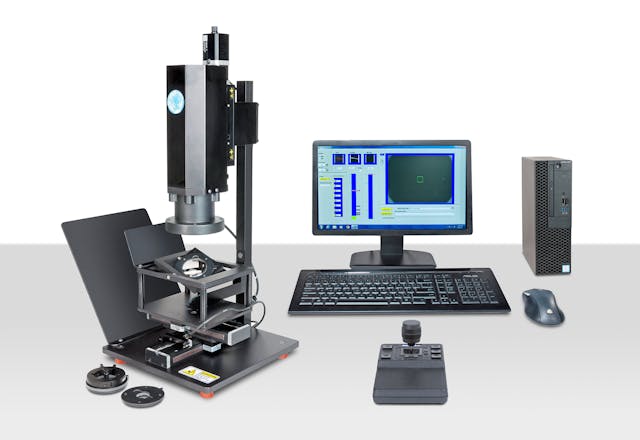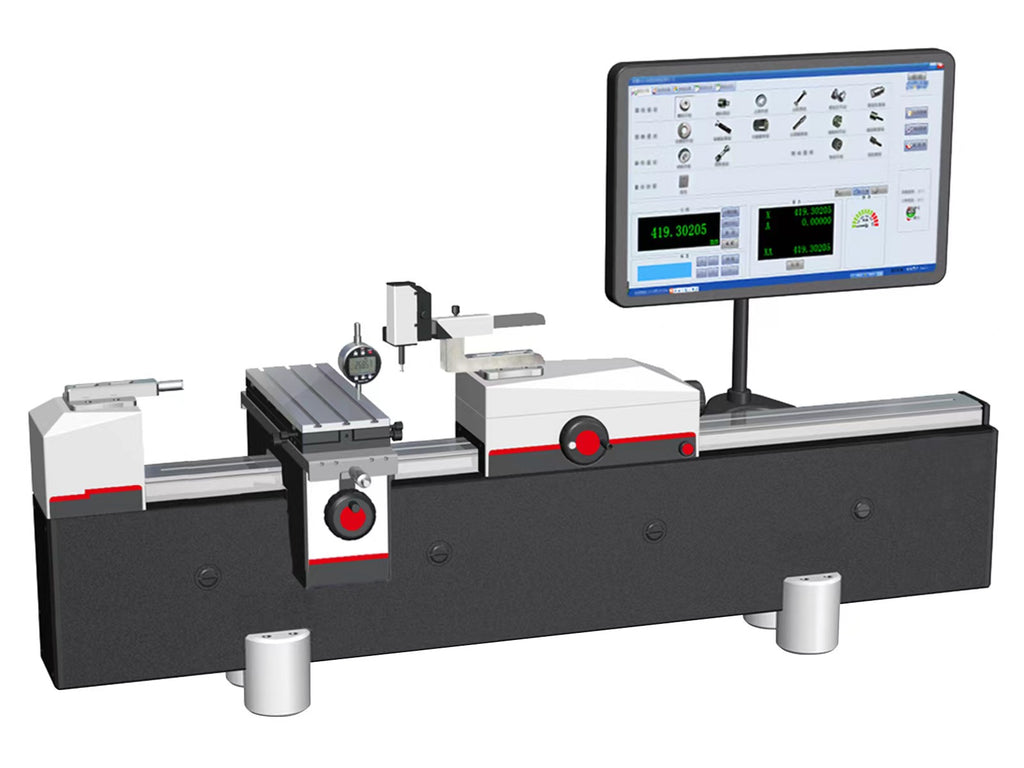The future of quality assurance: optical measurement systems and AI converging
The future of quality assurance: optical measurement systems and AI converging
Blog Article
The Duty of Optical Dimension Solutions ahead of time Metrology Strategies
Optical dimension systems have actually transformed assessment, bringing a level of accuracy that was when inconceivable. As you check out further, you'll uncover how these systems are shaping the future of dimension and quality control.
The Development of Width: A Historic Viewpoint
As you explore the history of assessment, you'll find that its evolution shows mankind's quest for accuracy and standardization. From ancient civilizations making use of body components as devices of measurement to the growth of standard weights and measures, each action reveals our desire for precision. The Egyptians built the pyramids using accurate measurements, while the Romans progressed design with their advanced measuring devices.
During the Renaissance, scientific innovations shifted the emphasis towards a lot more empirical techniques, leading the method for contemporary metrology. The intro of the statistics system in the late 18th century marked a significant turning point, establishing universal standards. Throughout the 20th century, technical innovations further changed assessment, enabling very exact dimensions in different fields.
Today, metrology continues to evolve, integrating electronic innovation and automation. This history highlights not simply the value of measurement however likewise our ruthless quest of enhancing accuracy and uniformity in our increasingly complicated world.
Principles of Optical Dimension Solutions
Understanding the concepts behind optical dimension systems is necessary for accurate cause assessment. You'll desire to consider fundamental optical concepts, measurement precision elements, and effective system calibration strategies. Each of these components plays an essential function in ensuring your dimensions are reliable and specific.
Basic Optical Principles
While exploring optical dimension systems, you'll experience fundamental optical concepts that create the backbone of precise data acquisition. Light behaves in foreseeable ways, and comprehending these habits-- like refraction, representation, and diffraction-- is essential for reliable dimensions. By mastering these concepts, you'll be furnished to utilize optical modern technologies effectively, paving the way for innovations in metrology and guaranteeing your dimensions are both reputable and repeatable.
Dimension Accuracy Elements
To achieve high dimension accuracy in optical systems, several elements enter play, affecting the reliability of your outcomes. The quality of the optical parts matters substantially. High-grade lenses and detectors minimize aberrations and noise, guaranteeing your measurements are precise. Second, ecological conditions like temperature level and humidity can affect dimensions, so preserving a steady setting is essential. Third, the positioning of the optical system is important; also small imbalances can cause considerable mistakes. The wavelength of light used influences the resolution and precision of your dimensions. By resolving these variables, you can enhance the total performance of your optical dimension systems, leading to even more trustworthy and accurate lead to your width applications.
System Calibration Methods
Accomplishing high measurement accuracy is just component of the equation; correct system calibration strategies are just as crucial in optical dimension systems. To assure your system provides dependable results, you need to routinely adjust it using common recommendation products. Start by changing the optical components, like lenses and mirrors, to reduce systematic mistakes. Next, utilize known dimensions to confirm the system's output and make required corrections. It's also essential to account for environmental aspects-- temperature level and moisture can affect measurements. Apply a regular calibration timetable to preserve consistency in time. Record all calibration treatments and outcomes; this will help you track efficiency and address any type of drift in accuracy. With these methods, you'll boost the integrity of your optical measurement system.
Key Technologies Behind Optical Dimension
Optical dimension systems count on several key technologies that boost precision and effectiveness in metrology. One important modern technology is interferometry, which uses the disturbance of light waves to measure tiny displacements and surface area irregularities with extreme precision. You'll additionally find laser scanning systems, which record comprehensive 3D data of items rapidly, making them important for dimensional evaluation.
In Addition, CCD and CMOS sensing units play a substantial function in transforming light into electric signals, enabling high-resolution imaging and specific measurements. Advanced formulas for photo handling even more enhance measurement accuracy by examining information in real time, filtering out noise and enhancing features.
Ultimately, optical fiber give adaptability and the ability to measure in challenging environments site while preserving signal integrity. By leveraging these modern technologies, you can achieve superior lead to your assessment jobs, ensuring that your measurements are both reputable and precise.
Applications of Optical Measurement in Industry
As industries increasingly demand accuracy and efficiency, the applications of optical dimension systems have come to be essential across numerous sectors. In production, these systems aid you monitor dimensions and tolerances in real-time, making certain quality assurance without lengthy manual checks. In the automotive sector, optical dimensions aid in aligning components with accuracy, improving safety and security and efficiency.
In electronic devices, you're using optical approaches to examine minute features on circuit card, discovering defects that could lead to failures. The aerospace industry advantages from non-destructive screening techniques, permitting you to analyze materials and parts without compromising their stability.
Optical measurement likewise plays an important role in fabrics, guaranteeing textile dimensions fulfill exact specs. optical measurement system. With their capacity to supply high-resolution information promptly, these systems empower you to make educated choices, improve procedures, and ultimately drive innovation across your industry
Enhancing Accuracy and Performance in Dimensions
When you think of improving accuracy in measurements, precision in your measurement techniques is important. By streamlining these procedures, you can achieve quicker results without sacrificing quality. Let's explore how adopting innovative optical dimension systems can elevate both precision and performance in your work.
Precision in Dimension Methods
Accuracy in measurement strategies is important for accomplishing reputable outcomes in assessment, especially considering that tiny inconsistencies can lead to considerable mistakes. By utilizing innovative optical dimension systems, you can improve the accuracy of your dimensions. Home Page In addition, precise measurements allow you to preserve quality control, guaranteeing that items fulfill rigid specs.
Enhancing Measurement Procedures
To enhance precision and performance in dimensions, streamlining your measurement procedures is important. Beginning by taking on optical dimension systems that offer real-time data, minimizing the time invested in manual recording. These systems frequently integrate flawlessly with existing software application, enabling you to automate information collection and analysis.
Following, standardize your measurement methods. By carrying out consistent procedures, you decrease irregularity and boost repeatability. Don't neglect to regularly calibrate your equipment to guarantee its accuracy.

The Effect of Optical Dimension on Study and Advancement
As researchers endeavor to push the borders of advancement, optical dimension systems have actually come to be vital tools in the development process. These systems offer you with specific, real-time information that enhances your capability to assess intricate materials and structures. In numerous areas, from biotechnology to aerospace, you count on optical measurements to enhance and optimize styles item efficiency.

With high-resolution imaging and non-contact techniques, you can minimize example disruption, allowing for even more precise outcomes. This ability to catch minute details accelerates your R&D cycle, allowing you iterate styles promptly and effectively. Optical dimension cultivates partnership throughout self-controls, as the information produced is commonly easily interpretable and shareable.
Ultimately, integrating optical dimension systems into your research study not only enhances efficiency but also grows your understanding of the sensations you research. By leveraging these innovative strategies, you're better outfitted to introduce and remain ahead in an affordable landscape.
Future Trends in Optical Measurement Equipments
With the quick development of modern technology, you're most likely to see substantial shifts in optical measurement systems that will certainly redefine their application throughout various industries. You'll observe an approach increased automation and combination of expert system, permitting real-time data analysis and enhanced accuracy. Miniaturization is one more trend; small tools will make it possible for dimensions in tighter areas, making them optimal for fields like aerospace and biomedical applications.
Furthermore, the introduction of innovative materials, such as photonic crystals, will improve sensitivity and resolution. Expect to see systems that can run in tough settings, supplying trustworthy dimensions in severe conditions. Cloud-based analytics will certainly additionally play a crucial role, offering you access to big datasets for much better decision-making. As these innovations assemble, you'll discover that optical measurement systems not just boost precision but additionally simplify workflows, inevitably driving innovation and efficiency in your tasks.
Frequently Asked Inquiries
Just How Do Optical Dimension Solutions Compare to Conventional Measurement Techniques?
Optical dimension systems supply greater accuracy and faster results compared to traditional techniques. You'll find they record even more information factors accurately, reducing human error and enhancing dependability, making them a favored choice in different applications.
What Industries Benefit A Lot Of From Optical Dimension Solutions?
You'll discover markets like aerospace, automobile, and electronics profit most from optical measurement systems. These sectors count on exact dimensions click over here to ensure top quality and efficiency, enhancing efficiency and reducing prices via advanced innovation.

Are Optical Dimension Systems Expensive to Execute?
Optical dimension systems can be expensive to execute, but their accuracy and performance frequently justify the price. Purchasing such innovation can result in significant lasting savings and renovations in top quality across numerous applications.
What Abilities Are Called For to Run Optical Dimension Equipments?
To run optical measurement systems, you'll require solid logical skills, interest to information, and proficiency in software application devices. Experience with optics and an understanding of measurement concepts will also enhance your performance and performance.
How Do Environmental Elements Impact Optical Measurements?
Ecological variables like temperature level, humidity, and air quality can distort optical measurements. You'll discover variations in precision as a result of light disturbance or refraction. optical measurement systems. Preserving stable problems is essential for precise and dependable optical dimension outcomes
Final thought
In summary, optical measurement systems are changing metrology by offering unparalleled accuracy and effectiveness. As you explore future fads, you'll see exactly how the assimilation of AI and automation will certainly continue to boost dimension techniques, driving development and boosting high quality control.
Achieving high dimension precision is just component of the equation; correct system calibration techniques are just as essential in optical dimension systems.When you think regarding improving precision in dimensions, accuracy in your measurement techniques is important. By utilizing sophisticated optical measurement systems, you can enhance the precision of your dimensions.To enhance precision and performance in dimensions, streamlining your measurement processes is necessary. How Do Optical Measurement Systems Contrast to Standard Dimension Techniques?
Report this page